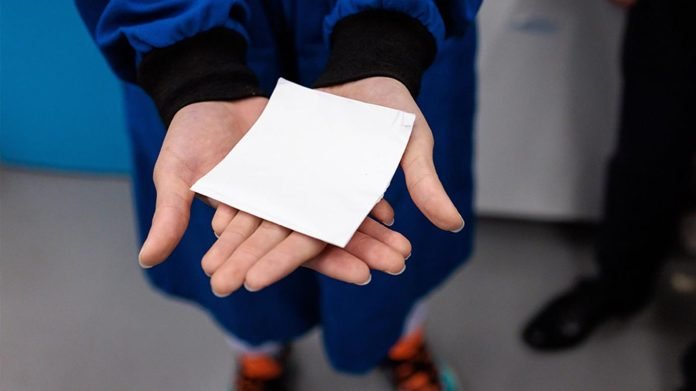
This year has been marked by intense heatwaves across the globe, with cities like Mexico, India, Pakistan, and Oman experiencing temperatures around or above 122 degrees Fahrenheit (50 degrees Celsius).
As global temperatures rise and more people move to cities, urban areas have become “heat islands,” where packed buildings and pavement trap and increase heat.
By 2050, it’s predicted that 68% of people will live in cities, making this a growing and deadly issue.
Researchers at the UChicago Pritzker School of Molecular Engineering have developed a new type of fabric that can help people cope with extreme heat.
Published in the journal Science on June 13, this innovative fabric was tested under the intense Arizona sun.
The results were impressive: the fabric stayed 4.1 degrees Fahrenheit (2.3 degrees Celsius) cooler than fabrics used for outdoor sports and 16 degrees Fahrenheit (8.9 degrees Celsius) cooler than regular silk often used in summer clothes.
The researchers hope this fabric will reduce heat-related illnesses and deaths, which have been a significant problem in many cities this year. Besides clothing, the fabric could also be used in buildings, cars, and for storing and transporting food.
By lowering internal temperatures, it could reduce the need for air conditioning, which is costly and harmful to the environment.
Assistant Professor Po-Chun Hsu emphasized the importance of reducing carbon emissions to make cities carbon-neutral or carbon-negative. However, in the meantime, people are suffering from high temperatures.
Considering the Environment
Existing cooling fabrics for outdoor sports reflect the sun’s light to keep wearers cool. However, in urban heat islands, heat comes from more than just the sun. Buildings and pavement emit heat from all directions, not just from above. This means many materials that work well in labs may not be effective in real-life urban settings like Arizona, Nevada, California, Southeast Asia, and China during heatwaves.
Co-first author Ronghui Wu, a postdoctoral researcher at Pritzker Molecular Engineering, pointed out that effective cooling textiles must consider the environment they are used in. For example, people mostly stand, so only about 3% of their clothing faces direct sunlight. The rest is heated by radiation from the sides and below. Traditional cooling fabrics don’t address this.
The challenge was to create a material that could protect wearers from both sunlight and thermal radiation from pavement and buildings. Solar heat is visible light, while thermal radiation is infrared, meaning they have different wavelengths. The new fabric needed to handle both, which required advanced material engineering.
Cooling homes and buildings often increases the planet’s temperature because of the carbon impact of air conditioning and refrigeration. Assistant Professor Hsu mentioned that about 10 to 15% of our energy use is just to keep ourselves comfortable. In wealthier countries like the U.S. and Japan, over 90% of households have air conditioning. However, in countries like India and parts of Africa, only about 5% of households do.
The new fabric, which has received a provisional patent, offers a passive cooling system that can reduce reliance on energy-intensive systems.
Beyond clothing, a thicker version of the fabric could be used on buildings and cars to lower internal temperatures and cut down on air conditioning use. It could also help store and transport food like milk, reducing the need for refrigeration and its environmental impact.
This new fabric represents a significant step towards keeping people cool in extreme heat while also helping to protect the environment.



